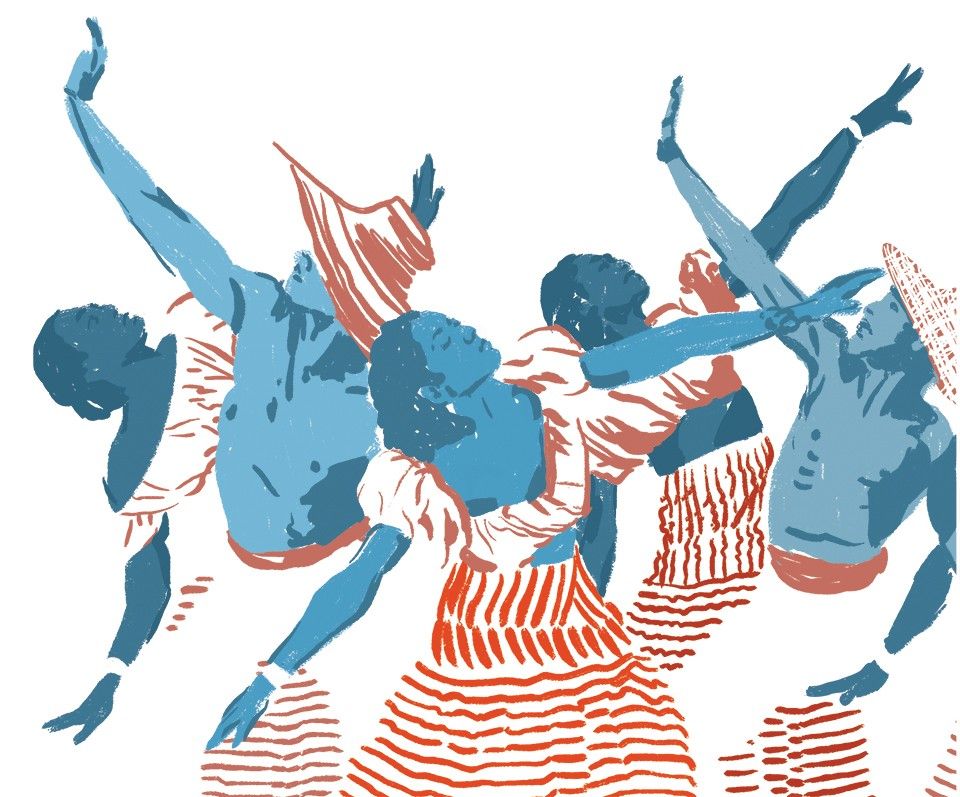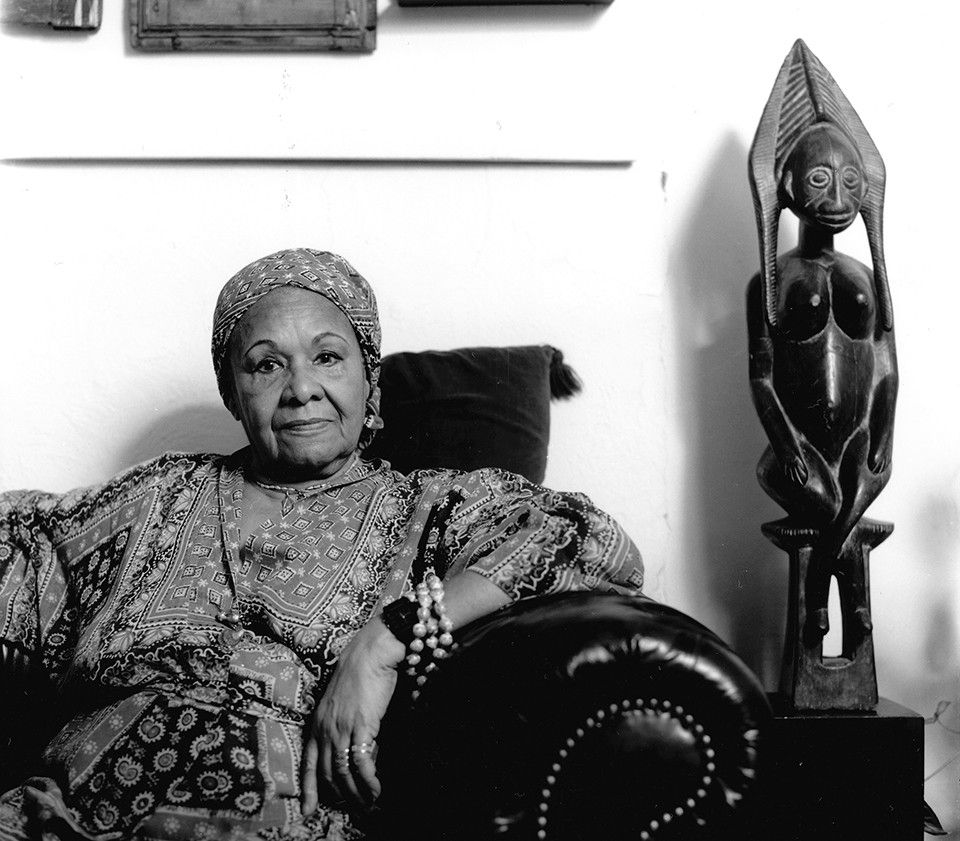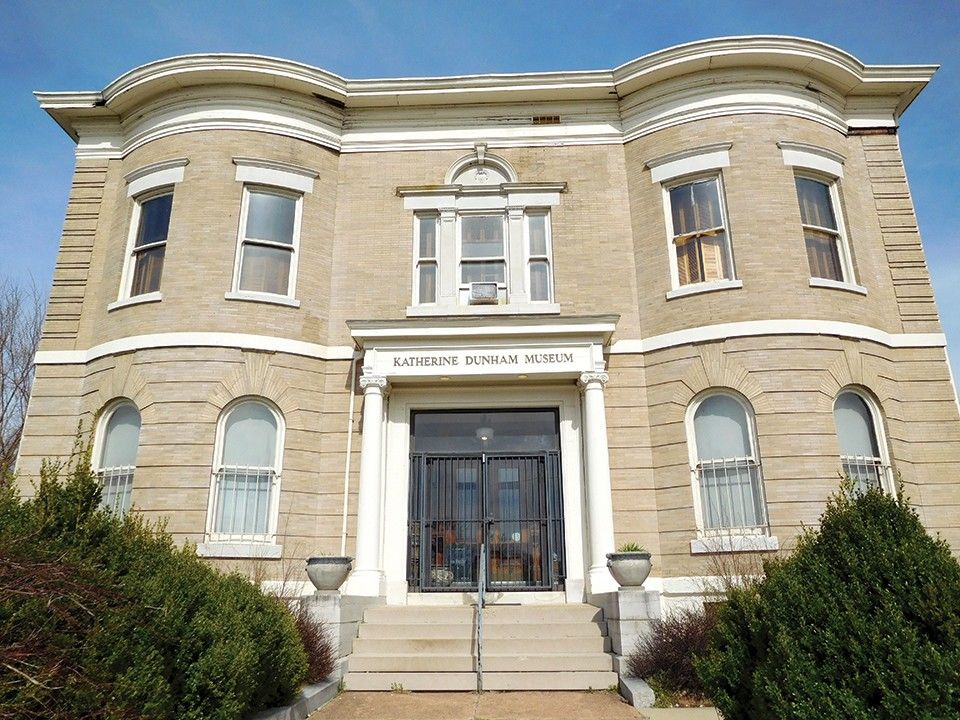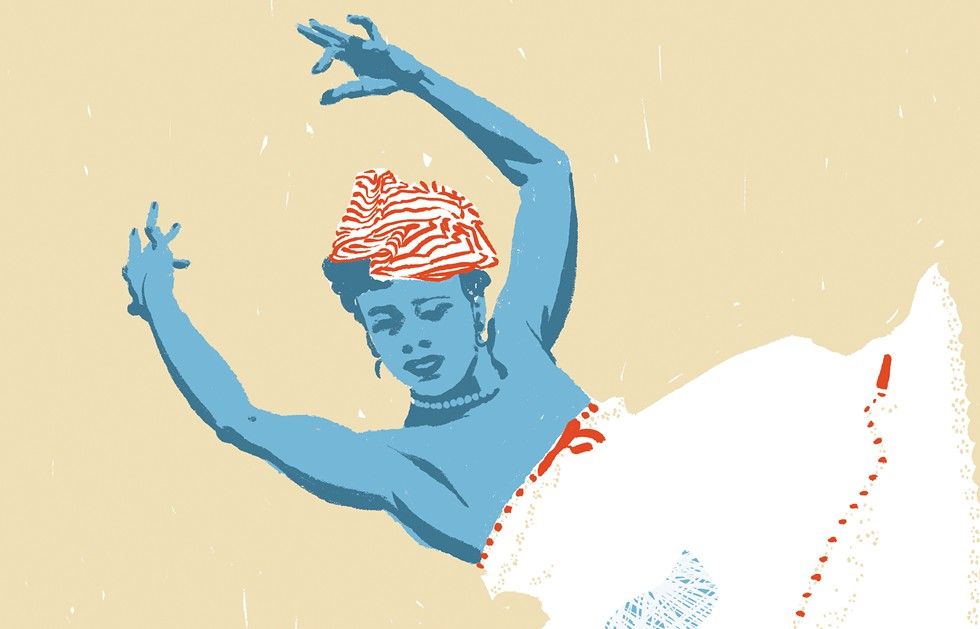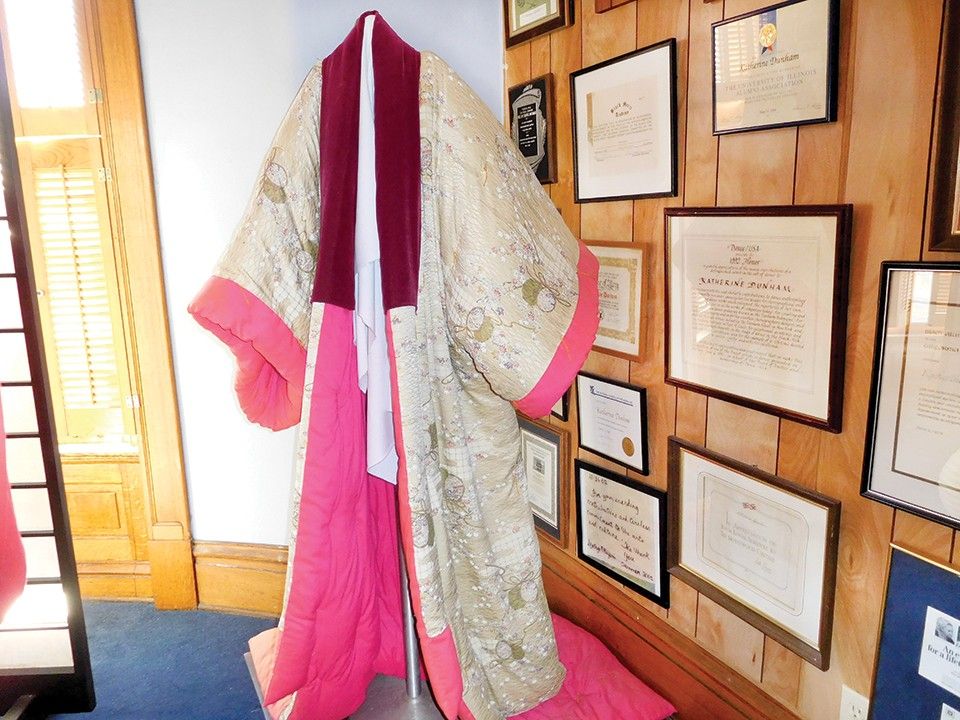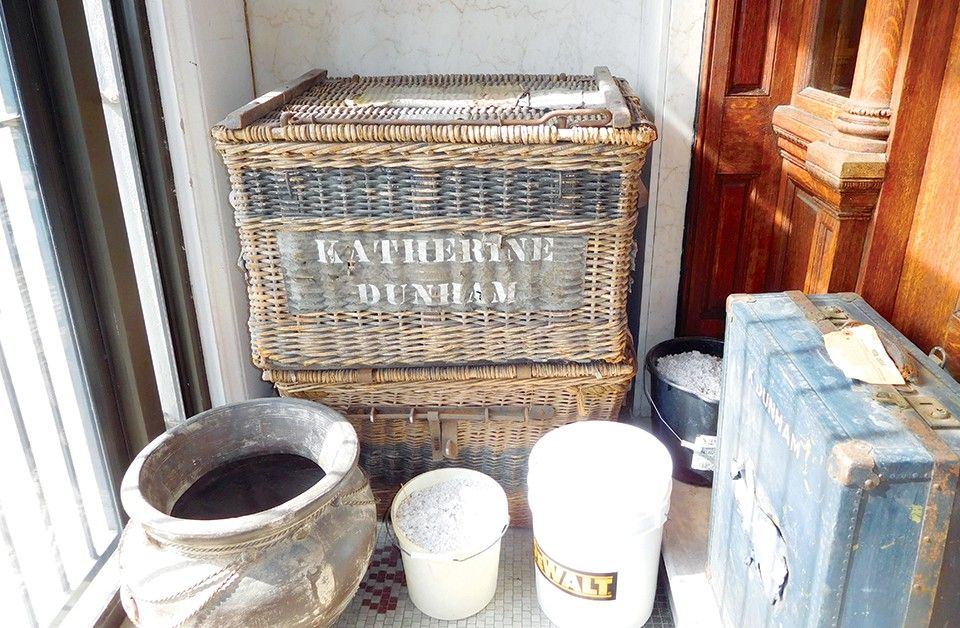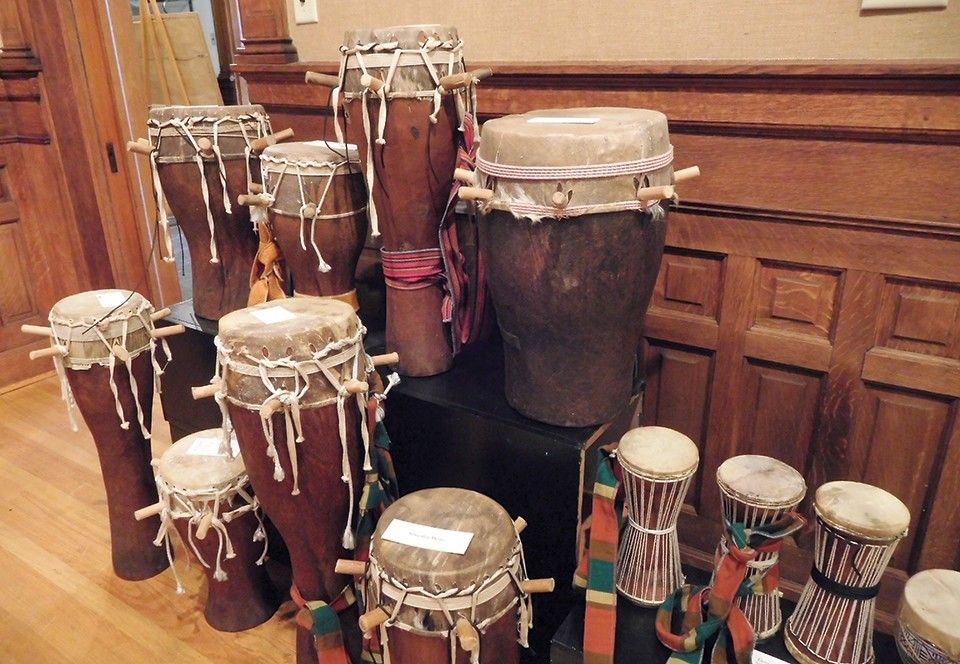For more stories about the effect of COVID-19 on museums, please visit the Prairie State Museums Project at PrairieStateMuseumsProject.org.
Katherine Dunham, a world-renowned dancer and choreographer, had big plans for East St. Louis in 1977.
Leverne Backstrom, president of the board of the Katherine Dunham Centers for Arts and Humanities, still does.
But Dunham, who was Black and held a doctorate in anthropology, had hoped to spur a "cultural awakening on the East Side," she told the St. Louis Post-Dispatch in 1978, by bringing the art and dance forms she collected from around the world to the area.
Instead, Dunham, who died in 2006, and the people who have tried to carry on her legacy have had to shimmy around problems related to the systemic poverty that exists in the predominantly Black city just east of the Mississippi River.
And just when a piece of good news showed up earlier this year — the promise of a $250,000 grant from the state of Illinois — some bad news crept in right behind it.
In March, problems poured on the organization's headquarters, which are located in an old mansion at 1005 Pennsylvania Ave. in a largely desolate area. When board members showed up for their monthly meeting on March 9, they discovered flooding in the museum's music room, which contains instruments such as drums as well as a balafon and a kor, a type of xylophone and string instrument played in West Africa.
The museum's leaders thought they had identified and fixed the source of the water — then it flooded again two weeks later. Repairing that damage will eat up at least some of the state money, which they had planned to use for projects like fixing the underground lighting in the African village outdoors.
"Praise God, we didn't lose any artifacts," says Backstrom, a retired teacher who lives within walking distance of the museum.
Around the same time as all this, Illinois Gov. J. B. Pritzker also issued a shelter-in-place order in response to the spread of the coronavirus, which meant the Dunham Centers could no longer offer tours, dance workshops and other programming.
In spite of the cascade of problems, Backstrom remains committed to Dunham's vision for East St. Louis because of her promise to a previous board president, Lena Weathers, who died in 2017.
"When I gave my word to Dr. Weathers that I would come on board and serve as a board member and help to maintain the Dunham legacy, not only in East St. Louis but in the world, it's kind of like, your word is your bond," Backstrom says.
Dunham is best known for bringing dances from various Black traditions to a wider audience on stages in America and around the world. In the 1930s, she founded the country's first self-supporting Black modern-dance troupe and led it to more than 50 countries on six continents, according to the New York Times. She pioneered what is now known as the Dunham Technique, which combines Caribbean dance, ballet, African rituals, and African American rhythms.
She was also a widely respected anthropologist and one of the first African American women to attend the University of Chicago, where she earned bachelor's, master's, and doctoral degrees in the field, according to the Dunham Centers.
And she was a political activist who spoke out against racism and tried to use the arts to alleviate poverty. In 1969, the Federal Bureau of Investigation published a bogus newspaper containing sex smears again civil rights leaders, including Dunham, who the agency considered an "effective black leader," the St. Louis Post-Dispatch reported.
Today, the museum that is part of honoring her legacy sits across from a vacant grass lot containing a small sign alerting visitors that it was the home of Malbern Stephens, a former East St. Louis mayor and "a decent man who fought corruption," the sign says. After the 1917 East St. Louis race war, when white people, during a labor dispute, rampaged through the city killing at least 39 or— according to some estimates—more than 100 Black people, Stephens oversaw reparations to victims.
Dunham, who was from a Chicago suburb, developed a love for the Metro East in the 1960s, when she was invited to serve as an artist-in-residence at Southern Illinois University Carbondale. In 1975, she purchased a group of neighboring houses in East St. Louis from the university for use as a personal residence, an office, and a residence for students, instructors and visitors, according to the Dunham Centers.
One of the homes—the museum damaged by the flooding—now contains over 250 African and Caribbean art objects from more than 50 countries.
But that wealth of cultural heritage stands in contrast to some of the Dunham Centers' struggles over the years. At one point, the centers owed back taxes to St. Clair County, which auctioned off the three other properties, Backstrom says. The financial issues stem in part from a $50,000 loan taken out by Dunham's assistant in which she listed one of Dunham's houses as collateral. The assistant died in 2005, the loan went unpaid, and the organization was unable to find the money to keep the three buildings. Thieves also stole copper wiring from the other properties, which are now vacant and deteriorating.
The problems facing the Dunham Centers are not unique to it. A report from George Washington University, "African American Museums and Financial Sustainability," found that "African American museums face a unique set of challenges that impede their efforts to achieve financial sustainability. African American museums are underfunded due to historical barriers, cultural preferences for charitable giving, institutional youth, and a dearth of professional business and museum skills."
In spite of those hurdles, Heather Himes, 38, still spent much of her childhood in East St. Louis dancing inside the Children's Workshop, a dance studio at the Dunham property. The classes were free.
"We didn't have a lot of money, so I know that I wouldn't have had the chance to have that kind of world-class training anywhere else," says Himes, who is now company manager of the Black Rep theater in St. Louis, a certified Dunham Technique instructor and an active volunteer at the centers.
Her early experiences there not only gave her "a solid foundation" as a dancer but also as "a Black child and Black woman now."
It spurred "my commitment to activism and politics. They taught us how to pay attention to what is going on in the world and to speak out against what you feel is wrong," she says.
Himes echoed the conclusions issued in the George Washington University report about lack of access to financial resources. She is critical of local organizations like the Center of Creative Arts, or COCA, that have instructors on staff who were trained at the Dunham Centers and are much healthier financially than the East St. Louis organization.
"Those ideas came directly from the work that Ms. Dunham had already been doing, so we have these institutions that have the infrastructure to get all this money and none of it is giving back, so the museum is not getting the proper support that it should be getting," Himes says.
Saroya Corbett, who is the same age as Himes, is now pursuing a doctorate in world arts culture and dance at the University of California, Los Angeles. But her family goes back generations in East St. Louis, and she describes it as "my ancestral home."
Corbett says her time dancing at the Dunham Centers "sculpted the trajectory of my career. I wouldn't be a dance artist, and I wouldn't be a dance educator, if I hadn't been taking classes down there."
She also sees the impact Dunham had on East St. Louis more broadly.
"My mom was taking classes from her before I was born. My aunt was taking classes. And it wasn't just Dunham Technique. She was teaching humanities. She was teaching acting classes and anthropology classes and language classes, and so she really did leave a major stamp on this community," Corbett says.
And yet the funds aren't there to demonstrate the impact she had.
"You see the Muny and all these major institutions get that money, and oftentimes, they are getting that money off the Black artist," Corbett says.
In 2018, the Dunham Centers received less than $50,000 in donations, according to a tax filing. That year, COCA received $14.1 million, and the Muny received $58 million.
Lee Nolting, a former professional dancer with Dean Martin's Golddiggers, spent significant time with Dunham and taught for a decade in the Children's Workshop. She is also the former artistic director of COCA's dance program and has spent decades teaching dance at the organization.
"I think COCA makes a strong attempt at not only providing scholarships for students of color but also hiring teachers of color, and I think they do a good job in that area," Nolting says. As to the Dunham Centers, she adds, "There needs to be someone who has a foot in the community of money and an interest and passion for dance and understands the importance of keeping her legacy alive."
Backstrom now awaits the money from the state of Illinois. She plans to use it to repair the damage caused by the flooding and complete as many of the following projects as the money allows: replace the soffit and fascia outside the building; replace guttering; fix the roof; fix the lighting in the African village, which features huts and an outdoor stage; and renovate the floors and bathrooms in the Children's Workshop, among addressing other needs.
Backstrom still would like the organization to be able to get the properties it lost back.
"It was Ms. Dunham's dream that once you visited the museum and the Children's Workshop, you would be able to walk down the street and see where she lived and see the library and have a bed and breakfast, so that's one of those dreams that has been deferred," says Backstrom, who works part time at a funeral home and is also very involved in her church.
Dunham spent significant time in East St. Louis on classes and seminars. When Backstrom joined the board in 2004, there were still classes on sewing, spoken word, music, drama, and poetry.
They now charge only a small fee for classes, but enrollment has still decreased in recent years. A decade or so ago, there were between 20 and 25 students—most of them from East St. Louis—enrolled in classes at any one time. When the pandemic hit, there were only about a dozen, Backstrom says.
"I think that has a lot to do with the economy, because parents are struggling to provide the basic needs for their children, so dance and art classes are just not part of the priorities," says Backstrom, who has lived in the neighborhood since 1966.
In East St. Louis, 38 percent of residents live at or below the poverty line, according to U.S. Census data.
These days, even if the organization and families had more money, it would be difficult to safely hold classes because of the pandemic. The organization had planned to hold its 36th Annual Dunham Technique Seminar from July 25 to August 7, featuring dancers and teachers from around the world. Backstrom intended to use some of the state funding for the programming.
"Dancers come to study and practice and get better with their Dunham Technique, and we do South African dancing and Bollywood dancing. ...We were going to finally have some money where we could do some really good publicity and solicitations to get students in from various colleges and make it a really big seminar and then, of course, COVID said, 'Nah, you're not doing any of that,'" Backstrom says and then laughs.
When Backstrom joined the board, she intended to serve a few years and help make some decisions — "never thinking that I would become the chief cook and bottle washer, everything from raising the funds to maintaining the physical structure of the building to doing tours and planning seminars," she says.
But Backstrom still sees supporting the arts via the Dunham Centers as a worthwhile way to spend her time.
"Plus, I live a block and a half from the museum. I have a vested interest in East St. Louis and in the neighborhood," she says. "I could have been gone a long time ago, like a lot of other folks, but I think if some of us don't stay and try to fix the problems from within, I don't think it's going to get fixed from the outside in."
COVID-19 Update: The connection between local and global issues–the Pulitzer Center's long standing mantra–has, sadly, never been more evident. We are uniquely positioned to serve the journalists, news media organizations, schools, and universities we partner with by continuing to advance our core mission: enabling great journalism and education about underreported and systemic issues that resonate now–and continue to have relevance in times ahead. We believe that this is a moment for decisive action. Learn more about the steps we are taking.
